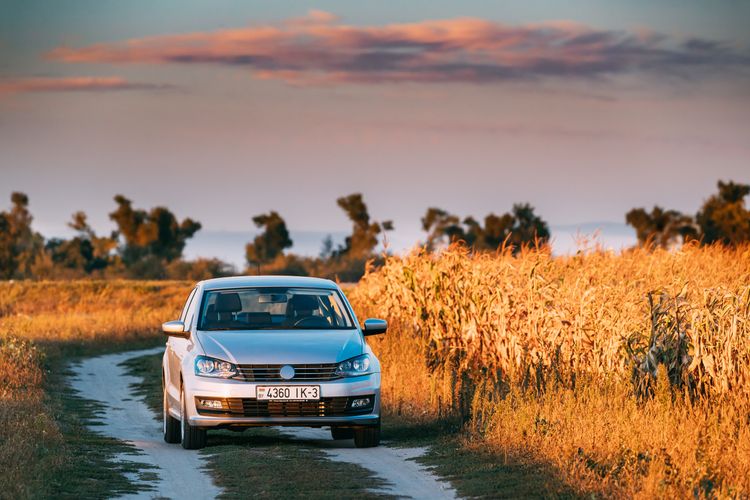What Is a Piston in Engine?
The engine is the heart and soul of any vehicle. It converts fuel (petrol or diesel) into energy that helps the car rotate its wheels on the road. The engine's design is complex and has many components, including the crankshaft, cylinder head, and camshaft. One key component is a 'Piston.'
A car engine piston is the moving boundary within the cylinder subjected to pressure differences. It converts the energy generated from fuel combustion into mechanical work.
Let's discuss the piston types, their workings, and their key components.
Share this article
Get Instant Car Insurance Quotes Online – Save Big!
Believe it or Not! Save upto* 75% on TATA AIG Car Insurance
List of Content
- Types of Piston Engine
- How Do Pistons Work?
- Components of Pistons
- Conclusion
- FAQS
Types of Piston Engine
The three common types of pistons are:
Flat Piston
As the name implies, a car engine piston has a flat upper surface or, better say, a flat crown. They help provide an even distribution of the air-fuel mixture and a consistent flame front during combustion. Unlike domed or dished pistons, flat-top pistons have the smallest surface area on top.
Dish Pistons
Dish pistons are automotive pistons with a recessed centre that resembles a dish. The dish provides space for the fuel-air mixture to improve combustion efficiency without causing pre-detonation. The design also accommodates larger valves and can help achieve a more uniform flame front during combustion.
Dome Piston
The dome piston gets its name from its crown's raised, curved shape. It directly interacts with the combustion chamber and forms the structural floor of the chamber.
How Do Pistons Work?
Here are the steps involved in the piston engine working process.
Step 1: Intake Stroke
The piston sets up at the top of the cylinder (Top Dead Centre - TDC). As the crankshaft rotates, it pulls the piston down to the bottom of the cylinder (Bottom Dead Centre - BDC). This creates a vacuum and opens the intake valve to allow the air-fuel mixture to fill the cylinder.
Step 2: Compression Stroke
When the cylinder is full, the intake valve shuts, and the piston rises to the top. This action squeezes the air and fuel together, preparing it for ignition.
Step 3: Power Stroke
At the compression peak, a spark plug ignites the mixture. This action causes an explosion to generate a decent amount of force, which pushes the piston back down to BDC. This stroke produces power to turn the crankshaft and ultimately drive the vehicle.
Step 4: Exhaust Stroke
After reaching BDC, the exhaust valve opens. The piston moves back up to TDC to push the spent gasses from the combustion out of the cylinder through the exhaust valve.
Step 5: Energy Transfer
The crankshaft transforms the piston's up-and-down movement, known as reciprocating motion, into a rotational movement. This helps transmit power to the vehicle's transmission and then to the wheels.
Step 6: Heat Management
Pistons operate in extremely high temperatures due to combustion. They are designed with materials and coatings that can withstand these conditions. Additionally, the engine's cooling system helps to regulate the piston temperature.
Step 7: Lubrication
Engine oil lubricates pistons to reduce friction and wear. This helps them provide a seal between the piston and the cylinder wall and blocks oil from penetrating the combustion chamber and combustion gases from contaminating the oil.
Step 8: Continuous Cycle
This process repeats several times per second, with the piston undergoing thousands of cycles per minute. The continuous and rapid sequence of these strokes keeps the engine running smoothly.
Components of Pistons
The function of the piston relies on its following key components.
Piston Ring
These are metallic split rings that fit into grooves on the external diameter of a piston. They help seal the gap between the piston and the cylinder wall for minimal loss of gasses from the combustion chamber to the crankcase.
Piston rings also play a role in heat transfer. Some common examples of piston rings include:
Compression Ring: It is present at the top of the piston.
Wiper Ring: This is located below the compression ring. It scrapes excess oil from the cylinder walls back to the sump.
Oil Ring: It controls engine oil consumption by regulating the oil film between the piston and cylinder wall.
Piston Skirt
It extends from the bottom of the piston. This skirt prevents excessive piston rocking within the cylinder during its up-and-down motion.
Piston skirts are usually made from cast iron due to its outstanding wear resistance and self-lubricating properties.
Connecting Rod
The connecting rod is made from sturdy materials like forged steel or aluminium alloys to deal with the stresses of engine operation. It has two distinct ends: the small end and the big end.
The small one connects to the piston pin, allowing the piston to pivot. The large end attaches to the crank pin on the crankshaft to facilitate the rotation.
Connecting Rod Bolt
This bolt secures the connecting rod’s cap to the connecting rod, enabling connection to the crankshaft.
The connecting rod bolt has various types of stress.
Tensile stress: When you tighten the bolt, it stretches a bit to keep everything together tightly.
Fluctuating tensile stress: The piston moves up and down, and at the end of the exhaust stroke (when the gases are pushed out), the bolt gets an extra pull, causing the stress to go up and down during the engine’s operation.
Shear stress: Imagine trying to pull apart the two ends of the connecting rod that the bolt holds together; that pulling force is shear stress.
Bending stress: When the engine goes through its power and exhaust phases, the bottom end of the connecting rod where the bolt is can get slightly bent out of shape, first one way and then the other, stressing the bolt.
Piston Bearings
These bearings are found where axial rotation occurs, usually at the large end of the connecting rod that links to the crankshaft. Their primary function is to provide a low-friction surface that allows the piston rod to move freely.
Piston bearings are made from lead, copper, silicon, or aluminium. These materials can easily handle high pressures and temperatures generated during engine operation.
Bearings are often semi-circular in shape to fit snugly into the bores on the pivot points of the piston assembly.
Conclusion
Overall, the piston remains an indispensable part of any automobile. Any issues with its functioning can potentially damage your vehicle’s other key components.
Obtaining the best car insurance policy in India is recommended to avoid any financial stress caused to your car resulting from accidents, theft, and certain natural disasters.
The Tata AIG car insurance provides financial protection against fire, accidents, theft, or calamities that can damage your vehicle. You can buy this four-wheeler insurance online or offline by sharing your vehicle details and making a premium payment.
FAQS
What is a piston?
A piston is a cylindrical engine component. It moves up and down in the cylinder to convert the expanding force of gases into mechanical energy.
What materials are pistons made from?
Pistons are typically made from aluminium or steel alloys. These materials help provide strength and resistance to heat and have lightweight properties.
Do pistons come in different types?
Yes, pistons vary in design based on engine type and performance requirements. Some common examples include flat-top, dome, and dish pistons.
What are the piston rings?
Piston rings maintain a seal between the piston and cylinder wall. They control oil distribution and manage gas compression.
Can pistons fail?
Pistons can fail due to overheating, excessive wear, or mechanical failure, leading to loss of engine efficiency or damage.
Get Instant Car Insurance Quotes Online – Save Big!
Believe it or Not! Save upto* 75% on TATA AIG Car Insurance
Share this article
Latest from our blogs

Zero Depreciation Car Insurance Cover
zero depreciation / depreciation reimbursement cover reimbur...
Read More
What is Insured declared value (IDV)?
The term ‘IDV’ refers to the maximum claim your insurer will...
Read More
How is your car insurance premium calculated?
Well it’s about time that changed, don’t you think? Read on ...
Read More